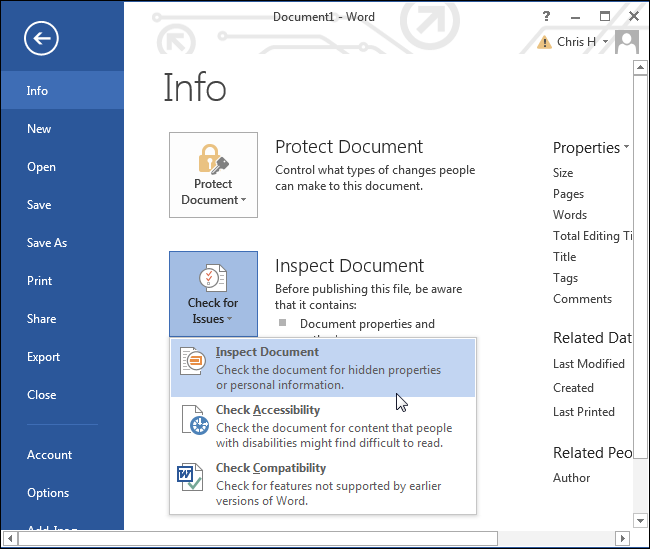On your Mac, choose Apple menu System Preferences, then click Users & Groups. Open Users & Groups preferences for me. If the lock at the bottom left is locked, click it to unlock the preference pane. Select the user or group you want to delete, then click the Remove button (looks like a minus sign) below the list of users. If other users are logged in to this Mac now, you can’t select them. Go to System Preferences Apple ID, click iCloud in the left panel and then uncheck Find My Mac. Next, click Overview from the left panel and then click the Sign Out button. Lastly, you'll need to. Create a backup. Make sure that you have a current backup of your important files. How to Edit Metadata in macOS 10.14 Mojave. The file sorting and searching functions of Mac OS Mojave depend heavily on the metadata of files. Hence, when there are errors and mix ups in the metadata of a file, it becomes quite difficult to trace out the files in the drives.
- How To Remove Personal Data From Comments Word For Mac Osx
- How To Remove Personal Data From Comments Word For Macbook Pro
- How To Remove Personal Data From Comments Word For Macs
Overview
You may not be aware that your Word, Excel, and PowerPoint files often contain hidden or personal information, such as revisions or comments, that others can access. Depending on the nature of the information, this could place you in an embarrassing or compromising position. It could even potentially put the university at legal risk.
For example, during the discovery phase in a lawsuit, electronic copies of relevant documents could be subpoenaed. Any hidden comments or revisions in these documents could then possibly be used as evidence.

Examples of hidden or personal information that are stored in Office documents include:
- Tracked changes, comments, annotations, and versions, even if not displayed
- Hidden text or data cells
- Presentation notes
- Previously deleted text
- Name of author and person who last modified the file
To protect any sensitive information from accidentally being made public, Information Technology Services recommends that you get into the habit of removing this information before distributing final electronic copies of your documents. There are some simple ways to do this, as described below.
Issue
Microsoft Office document with track changed enabled. While a user edits document in MS Word 2010 his changes appears properly colour coded and with his actual user name. However, as soon as the document is saved, user's name is changed to word 'Author' and at the same time user specific colour coding is lost. This is a problem because users are not able to track who made which changes as all changes appear in the same colour and marked as made by the same user 'Author'.
Resolution
This document was originally created in MS Word 2003 and original author had option 'Remove personal information from file properties on save' enabled. Although this option is normally not available for documents created in Microsoft Word 2010, it's still applies to documents created in older version of MS Office if they had it enabled.
How To Remove Personal Data From Comments Word For Mac Osx
To disable this in MS Word 2010:
How To Remove Personal Data From Comments Word For Macbook Pro
- File > Options > Trust Centre > Trust Center Settings > Privacy Options
- In Document-specific settings part uncheck box next to Remove personal information from file properties on save
This option is only available for applicable legacy documents, otherwise it is greyed out. - For Microsoft Word 2003 it is located in Tools > options > Security tab.